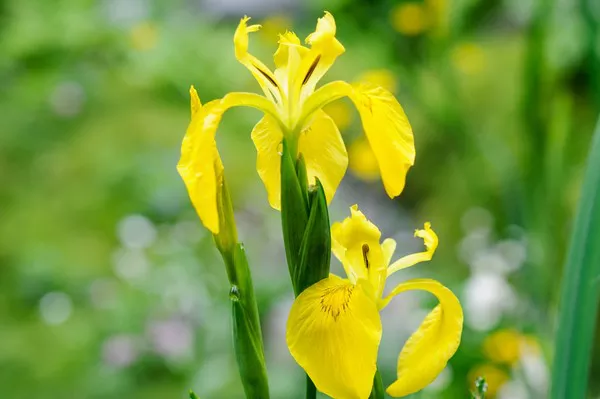Peas, a versatile and nutritious vegetable, have been a staple in gardens and kitchens for centuries. While most gardeners focus on harvesting the delicious green pods, there’s another aspect of peas that deserves attention – their stunning flowers. Pea flowers can add beauty and color to your garden while also benefiting your pea crop by attracting pollinators. In this article, we will explore how to get peas to flower and help you achieve a thriving pea garden.
1. Selecting the Right Pea Varieties
Before you can enjoy the beauty of pea flowers, you need to start with the right pea varieties. Some pea varieties are bred primarily for their ornamental value, while others are chosen for their edible pods. For a successful pea flower display, consider planting varieties like ‘Cupid,’ ‘Bijou,’ or ‘Purple Podded Peas.’ These varieties are not only delicious but also produce striking blossoms in shades of white, pink, or purple.
2. Preparing the Soil
Peas thrive in well-drained soil that is rich in organic matter. Prepare the soil by adding compost or well-rotted manure to improve its fertility and moisture retention. Peas are nitrogen-fixing plants, so they can benefit from soil that is not overly rich in nitrogen. Test your soil to ensure it has a pH level between 6.0 and 7.5, which is ideal for pea growth.
3. Timing is Crucial
To get your peas to flower, timing is crucial. Peas are cool-season crops, and they should be planted early in the spring or late in the fall, depending on your local climate. Sow the pea seeds directly in the ground when the soil temperature reaches around 45°F (7°C). Planting peas too late in the season can lead to poor flower development due to warmer temperatures.
4. Proper Planting Depth and Spacing
When planting peas, ensure they are sown at the correct depth and spacing. Planting them too deeply can delay germination, affecting the flowering process. Pea seeds should be sown about 1 to 1.5 inches deep, with a spacing of 2 to 4 inches apart in rows that are 18 to 24 inches apart.
5. Watering and Mulching
Peas require consistent moisture for healthy growth and flowering. Water them regularly, especially during dry spells, to keep the soil evenly moist. However, avoid overwatering, as peas are susceptible to root rot in waterlogged soil. Applying a layer of mulch can help conserve moisture and maintain a stable soil temperature, promoting pea flower development.
6. Supporting Pea Plants
Pea plants have a tendency to climb, so providing proper support is essential. Use trellises, stakes, or pea fences to prevent them from sprawling on the ground. This not only helps with pea flower visibility but also keeps the pea pods clean and easy to harvest.
7. Fertilizing for Pea Flowers
As mentioned earlier, peas are nitrogen-fixing plants, which means they can extract nitrogen from the air and store it in their root nodules. Therefore, they typically require less nitrogen-based fertilizer than other vegetables. Excessive nitrogen can lead to lush foliage at the expense of pea flower production. Instead, focus on providing a balanced fertilizer or compost to ensure your peas receive essential nutrients without overstimulating foliage growth.
8. Pruning and Deadheading
To encourage more pea flowers and maintain a tidy appearance, consider pruning your pea plants. Pinch off the tips of young vines when they reach about 6 inches in height. This will encourage branching and the production of more flowers. Additionally, regularly deadhead (remove spent flowers) to prevent the plant from putting energy into seed production, which can reduce the overall number of pea flowers.
9. Pest and Disease Management
While growing peas for their flowers, it’s crucial to monitor for pests and diseases that can harm the plants. Common pea pests include aphids and pea weevils, which can stunt plant growth and disrupt flower development. Keep an eye out for symptoms and use appropriate organic or chemical controls when necessary.
10. Companion Planting with Peas
Enhance your pea flower display by strategically planting companion plants. Certain flowers, like marigolds and nasturtiums, can not only deter pests but also add a complementary burst of color and attract beneficial insects that aid in pollination.
11. Attracting Pollinators
To ensure robust pea flower pollination, it’s essential to attract pollinators to your garden. Peas are primarily self-pollinating, but the presence of bees and other pollinators can increase flower productivity. Planting other nectar-rich flowers nearby, such as lavender or salvia, can help draw these essential visitors.
12. Harvesting Pea Flowers
Once your pea flowers have bloomed, you can enjoy their beauty in the garden, but you can also harvest them for culinary use. Pea flowers have a delicate, slightly sweet flavor and are often used in salads or as garnishes. Be sure to pick the flowers when they are in full bloom to maximize their flavor and appearance.
13. Saving Seeds for Future Planting
If you’re growing heirloom or open-pollinated pea varieties, consider saving the seeds for future planting. Allow some pea pods to mature and dry on the vine. Harvest the seeds, and store them in a cool, dry place for the next planting season. This practice not only preserves heirloom varieties but also ensures a consistent supply of beautiful pea flowers in your garden.
Conclusion
Growing peas for their beautiful flowers can be a rewarding endeavor for both novice and experienced gardeners. By selecting the right pea varieties, preparing the soil, timing your planting, and providing proper care, you can enjoy a bountiful display of pea flowers. These blossoms not only add aesthetic value to your garden but also attract pollinators, contributing to a healthier pea crop. Whether you’re harvesting peas for their pods or savoring the delicate flavor of their flowers, the journey of growing peas is a delightful experience that connects you with nature and the joy of gardening.


